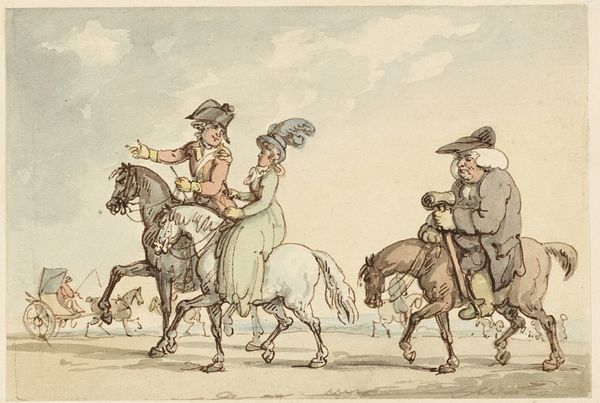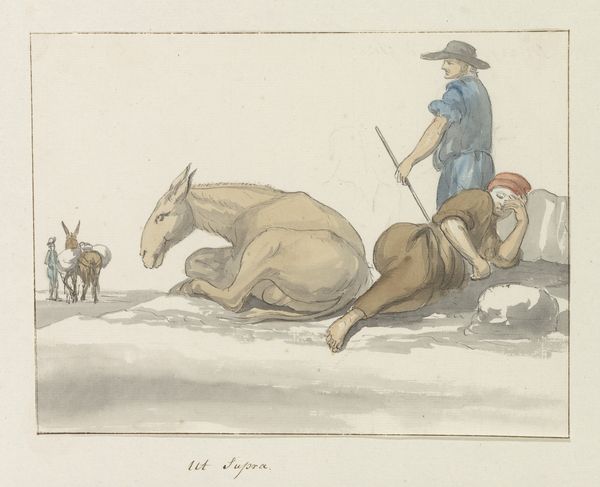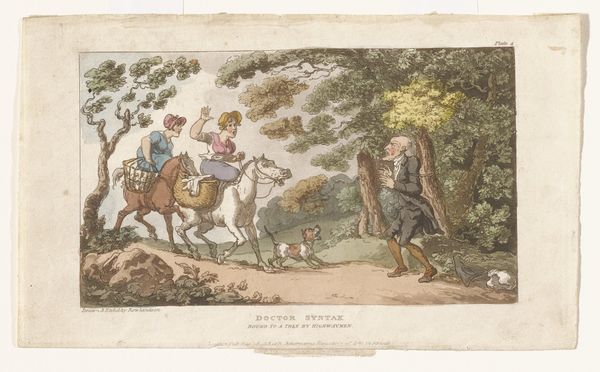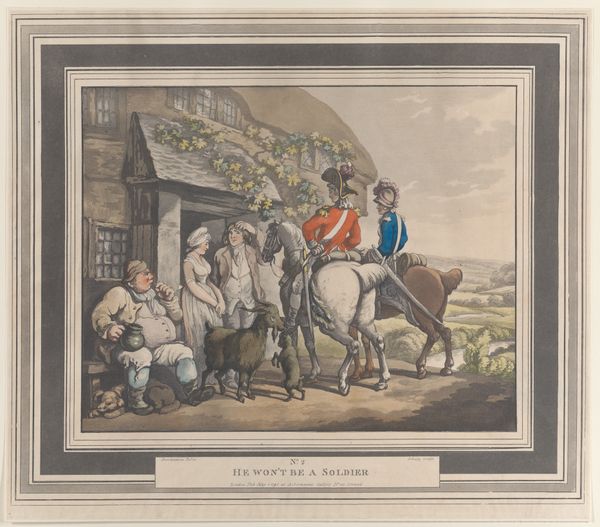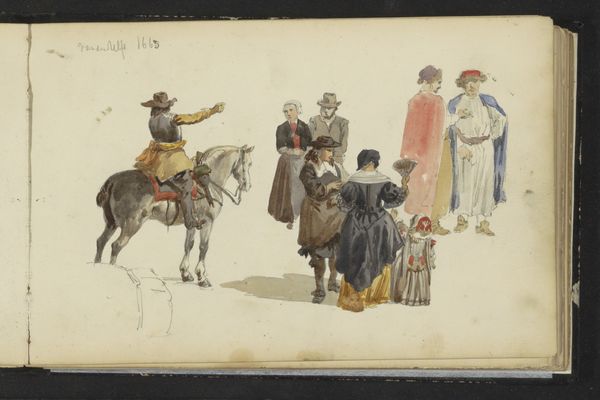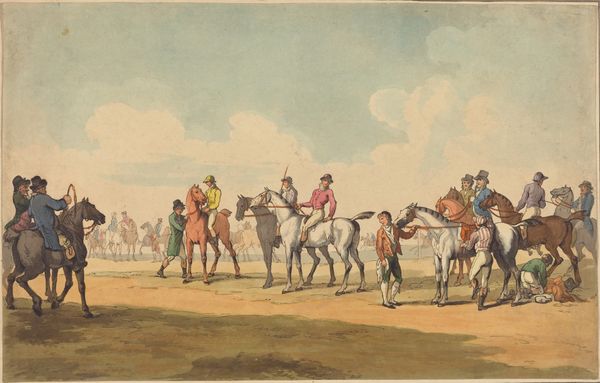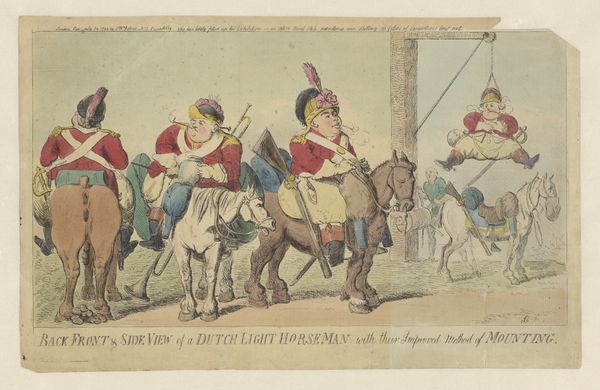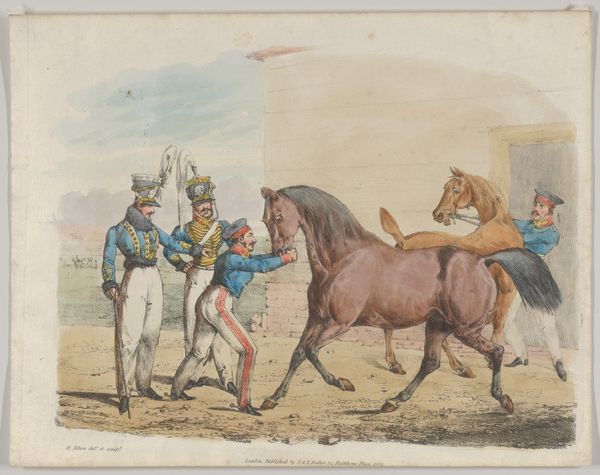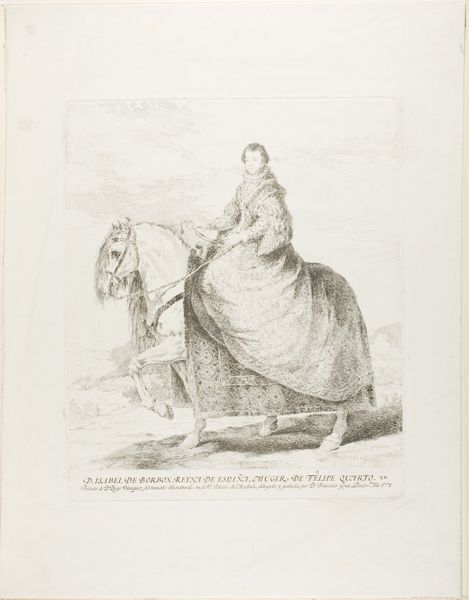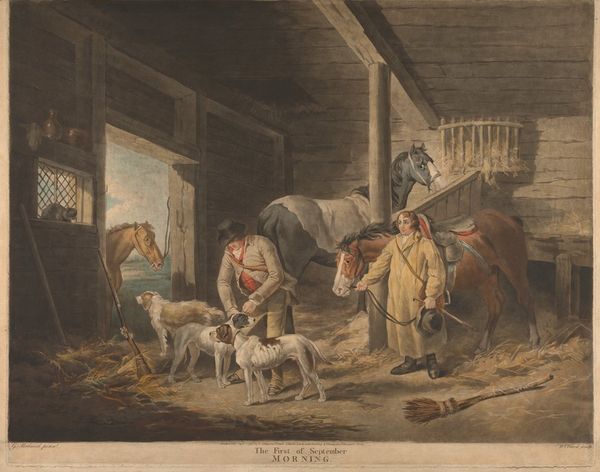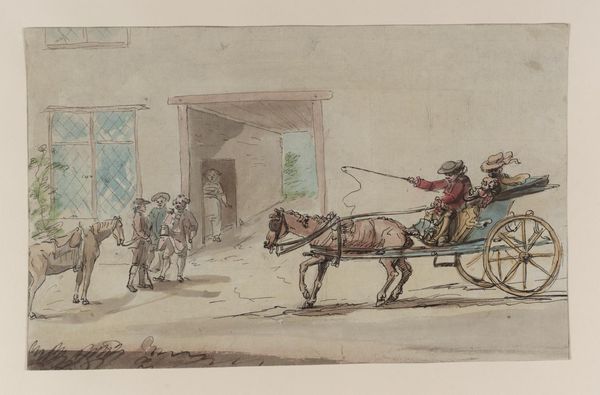
Dimensions: 232 × 307 mm
Copyright: Public Domain
Curator: This drawing, “A Sketch from the Stand at Scarboro,” comes to us from the mid-19th century, between 1850 and 1860, courtesy of John Leech. It's currently held at the Art Institute of Chicago. Editor: It's lively! A very immediate feel to it. You can almost smell the hay and the horses. The quick, scribbled lines and washes of watercolor make it seem like Leech captured a fleeting moment. Curator: Absolutely, and what a loaded moment! Leech, as a social commentator, often used his art to critique Victorian society. Here, we see a well-to-do woman, presumably on holiday, engaging with stable hands, possibly to acquire a pony for her son. Editor: The means of production are front and center: it’s ink and watercolor on paper, accessible materials perfectly suited to capture everyday life. Note how the ink line dictates form and the watercolor infills provide localized tone. The drawing is quite thin and permeable which serves this affect really well. Curator: Exactly, the light application of the watercolor underscores the class dynamics at play here. Her request that ‘any bit of a Pony Thing will do’ implies a careless entitlement, while the stable hands likely work under significantly harsher material conditions. The child’s costume also signifies privilege; the narrative explores the power relations inherent in leisure and labor. Editor: And the way Leech depicts her size compared to the others. The voluminous skirt practically consumes the boy! A brilliant exaggeration pointing to wealth, material excess and conspicuous consumption in a culture driven by status. It underscores how those who work with the animals are often less visible or literally smaller in stature than the patrons. Curator: Indeed, even the coastal location of Scarboro plays into the story. Seaside towns were becoming increasingly fashionable for the rising middle class, creating these kinds of interactions, and sometimes, tensions. It provides a microcosm for analyzing the larger social structures. Editor: A powerful study in fleeting form that speaks volumes about work and society in its time! I find Leech’s approach highly effective as a result of this very combination of efficiency, media, and observation. Curator: Yes, looking at the power dynamics he presents here, it's not only a moment in time, but an encapsulation of Victorian attitudes toward social mobility and class awareness. An everyday snapshot loaded with systemic critiques!
Comments
No comments
Be the first to comment and join the conversation on the ultimate creative platform.
